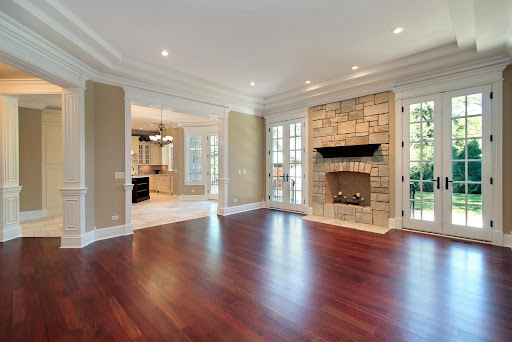Did you know that in 2020, the wood flooring market had an estimated size of $3.6 billion? Come 2027; experts project it to grow further and generate $5.2 billion in revenue!
Wood floors, after all, deliver outstanding durability and aesthetic properties. No wonder, then, that they’re a mainstay in residential buildings.
The most common types of wood flooring, in turn, include engineered and solid hardwood.
So, what exactly are these two, and how do they differ?
This engineered wood flooring vs. hardwood flooring guide covers what you need to know, so read on.
- The Construction
Shop maple hardwood flooring, and you’ll find it in engineered and solid types. Oak and walnut are other common types of flooring available as engineered and solid. They look similar at first glance, but it’s what’s beneath that sets them apart.
Engineered wood flooring is a two-part construction of hardwood and plywood. Its top layer consists of a thin sheet of hardwood, such as the abovementioned species. Under that is a substrate made of high-quality plywood.
By contrast, hardwood flooring often refers to solid wood flooring. This means its entire thickness consists only of solid wood.
- The Lifespan
One of the primary benefits of hardwood floors is their longevity; they can last 100+ years. Engineered wood flooring has a long lifespan, too, but only about half of solid wood. However, that still depends on overall foot traffic and maintenance.
A critical factor that gives hardwood flooring a longevity advantage is its solidness. Thanks to this, you can sand and refinish it several times over its lifespan.
You can only sand and refinish engineered wood flooring once or twice. Again, this is due to only its topmost layer being hardwood.
- The Cost
One of the chief benefits of engineered wood flooring is that it often costs less than hardwood. Depending on the type of solid wood it contains, it can cost $6 to $23 per square foot. The average hardwood flooring cost, on the other hand, ranges from $5 to $28.
- The Resale Value
Both solid hardwood and engineered wood flooring add value to your home. However, due to the former’s longer lifespan, it keeps its value better than the latter.
Thus, solid hardwood flooring usually has a higher resale value than engineered wood.
- The Greener Option
Hardwood flooring is 100% biodegradable because it consists of solid wood. It also doesn’t require frequent replacement, considering its long lifespan. Plus, it’s reclaimable, recyclable, and reusable for making engineered wood floors.
Engineered wood flooring is also a green option since it uses reclaimed wood. However, it’s not as biodegradable as hardwood as it contains adhesives. Still, you can re-sand, refinish, and take good care of it to prevent it from going to a landfill sooner.
Consider These Engineered Wood Flooring vs. Hardwood Flooring Differences
Now that you know more about the two, you can decide between engineered wood flooring vs. hardwood. Just remember that engineered wood costs less, but hardwood lasts longer. So if you have a tighter budget, the former may be a better choice, but if you can splurge, opt for the latter.
For more inspirational home, decor, and lifestyle guides like this, check out the rest of our blog now!


